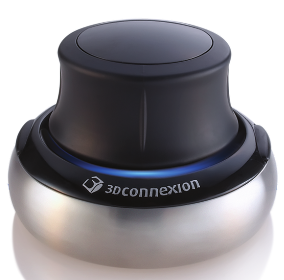 As AI based decision-making methods make their way from internet applications to more safety-critical physical systems, questions about the robustness of the models and policies become increasingly more important. This project is developing methods to address this through novel methods for learning specifications from human experts and synthesising policies that are correct by construction. These developments are grounded in the domain of surgical assistance with autonomous robots in the operating room.
As AI based decision-making methods make their way from internet applications to more safety-critical physical systems, questions about the robustness of the models and policies become increasingly more important. This project is developing methods to address this through novel methods for learning specifications from human experts and synthesising policies that are correct by construction. These developments are grounded in the domain of surgical assistance with autonomous robots in the operating room.
This repository is under an MIT license, but pulls in git submodules that may be subject to different licenses. ### NB While still being prototyped, some submodules may be private - the public branch should remain accessible at all times.
Ubuntu 16.04, ROS Kinetic
- Install the required packages, clone this repository, and
cd saifer-surgery
git submodule update --init --recursive
catkin_make
source devel/setup.bash
- Bug fixes, code cleanups and functionality improvements are encouraged, along with testing and documenting
- Help fight the hard coded parameters
- At the moment, the preferred integration strategy is:
- Build standalone library/ tool with core functionality (eg. visual IRL) and link using a git submodule
- Develop a small app showing how to use this functionality (eg. autonomous ultrasound scanner)
- Document both with READMEs
 Launch arms, plan and execute using MoveIt!
Launch arms, plan and execute using MoveIt!
roslaunch saifer_launch dual_arm.launch

roslaunch saifer_launch dual_arm.launch
roslaunch spacenav_teleop teleop.launch
 Select a pointcloud region in Rviz and follow this surface using MoveIt! Cartesian waypoint following and position control. This requires calibrated offsets depending on the tool used for contour following. See the contour launch node for more detail.
Select a pointcloud region in Rviz and follow this surface using MoveIt! Cartesian waypoint following and position control. This requires calibrated offsets depending on the tool used for contour following. See the contour launch node for more detail.
roslaunch contour_launch contour.launch
 Physically move red arm (only red has this functionality at present, to avoid risk of crushing blue camera. Make sure to zero the ft sensor before using. See the ft_compliance node for more detail.
Physically move red arm (only red has this functionality at present, to avoid risk of crushing blue camera. Make sure to zero the ft sensor before using. See the ft_compliance node for more detail.
rosservice call /red/robotiq_ft_sensor_acc "command_id: 0 command: 'SET ZRO'"
roslaunch ft_compliance compliance.launch
 This app uses Bayesian optimisation to move an ultrasound scanner over an ultrasound imaging phantom in search of a tumour like object. The app relies on a reward model learned from demonstration ultrasound image sequences using the visual IRL package.
This app uses Bayesian optimisation to move an ultrasound scanner over an ultrasound imaging phantom in search of a tumour like object. The app relies on a reward model learned from demonstration ultrasound image sequences using the visual IRL package.
Launch robot and ultrasound image streamer
roslaunch saifer_launch dual_arm.launch
roslaunch ultrasound_epiphan us.launch
rosrun ultrasound_imager pairwise_ultrasound_scanner.py
Declaratively specify the space of possible environments your robot can run in, then automatically sample environment configurations which conform to this specification. These configurations can then be used to initialize setups in simulation.
Note: Integration of this functionality with ROS-Kinetic is currently in-progress, but you can access the main functionality via the ProbRobScene repository
